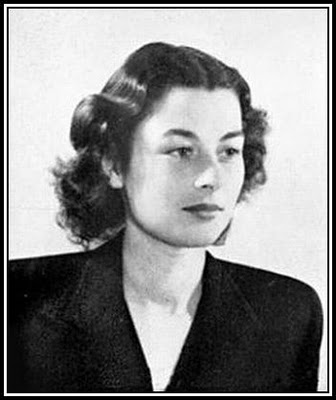 |
| |
I first heard of Violette Szabo in a place where I would have least expected and I have to admit that I am as enamoured of this woman today as I was when I first heard her story in 1958. I cannot forget the impression that she made on me for this was a woman who was not only humble, but who most likely considered herself to be just an ordinary young woman willing to do her bit. However, she was far from ordinary, for she was by any definition, exceptional. |
---ooOoo--- |
It was in November 1956 that we moved from Bethnal Green to Langley, which was then in the County of Buckinghamshire. I was none-too-happy about this move, but having just turned twelve years of age, I had little choice in the matter. At that time, Langley, which was part of Slough Town, as it was called then, was considered by people like me from London, as being in the country. Although it was only eighteen miles from the centre of London, in those days, this was considered to be a formidable distance. |
| |
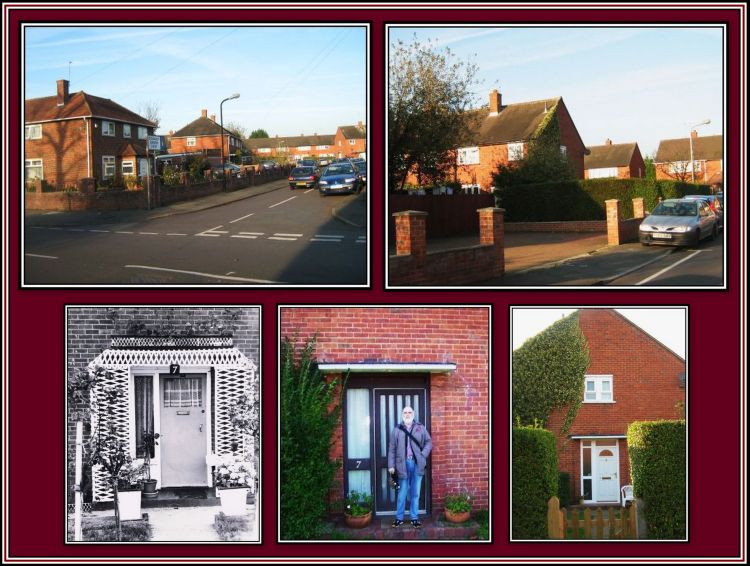 |
Upper Row: Stanley Green East, Langley, once Bucks, now Berks
Lower Row: Number 7, 1960, 2006 & 2011 |
| |
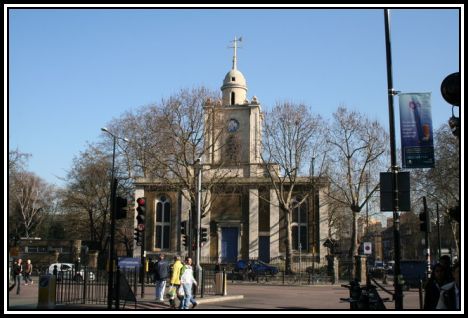 |
We had been moved to a newish house on the corner of a cul-de-sac in November 1956. Although it was nice to be living in a house after the tiny attic flat where we had lived for the past two years, I remember being filled with dismay on our first night in the new house. What struck both my mother and me was the quietness. There was no sound of traffic. We had lived at the heart of Bethnal Green and overlooked Cambridge Heath Road and the various little parks that make up its centre. Traffic passed by day and night. Trolleybuses and other buses noisily passed us while lorries and cars honked their horns while the chimes of St John’s Church across the way were heard every fifteen minutes. We were used to living with noise and hardly noticed it. I remember sitting at the table in our new kitchen and hearing nothing! The silence was deafening and both my mother and I were seized with an ache deep within us of loneliness. It took several years for that ache to leave me, but if truth be told, it has never quite disappeared. |
|
| |
Eventually I settled into my new school and my new life, but not without reservation. By 1958, I was interested in the things that appealed to youths of my age, which included the habit of going out with my friends on a Saturday night, and remember especially one particular evening in 1958. One friend and I had arranged to meet some local girls at the Crown Corner and to go to the pictures. We weren’t too fussed about which film we went to see, as we were only concerned with sitting as close to the back of the circle as possible and then slipping our arms around the girl sat next to us once the lights went down. I can’t remember who suggested that we go to the Granada in Windsor Road, but since this did not cause any controversy, we set off down the road and were soon sitting in a side row reasonably close to the back of the circle. All looked good for a pleasant night out. |
| |
 |
Granada Cinema, Windsor Road, demolished to make way for the new Police Station |
| |
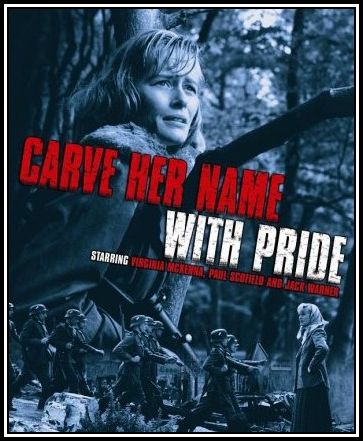 |
I have forgotten the name of the girl that I sat with that night in the cinema and have also forgotten if the programme was a double feature or not, but I have not forgotten the film. My friend and I probably thought that we were going to see a war film perhaps in the John Wayne genre. However, this was not the case. The film, entitled Carve her name with pride, was an English film, which although set during World War II, was not the usual war film, but one that told the true story of a very courageous woman named Violette Szabo. |
|
| |
The film was directed by Lewis Gilbert with Virginia McKenna as Violette Szabo. The film told the story of a young woman who lived with her English father and French mother, played by Jack Warner and Denise Grey, and who with her friend, played by Billy Whitelaw, meets a young French officer one Sunday afternoon in a park. She and the officer soon fall in love and get married. Soon after, her husband returns to war and is killed, leaving her with her daughter that she had recently given birth to. After a short time, she is contacted by Special Operative Executive. At her interview, she is told that she has special qualities that make her suitable for training as an agent for work behind enemy lines. After careful thought, she decides to join the service and embarks on the rigorous training necessary to equip her for this work. During her training, she injures her ankle while parachuting out of an aeroplane, however her most intense pain is felt at having to leave her family. Tragically during one of her missions, she is caught by the Nazis and imprisoned where she is tortured and eventually shot. The film ends as we see her young daughter, Tania, with her grandparents after leaving Buckingham Palace where Tania Szabo has collected the George Cross awarded to her mother by King George VI on behalf of a grateful country. |
| |
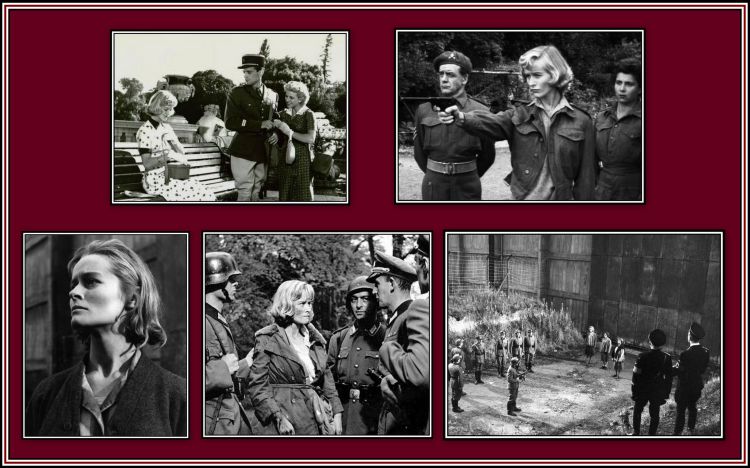 |
Scenes from the film |
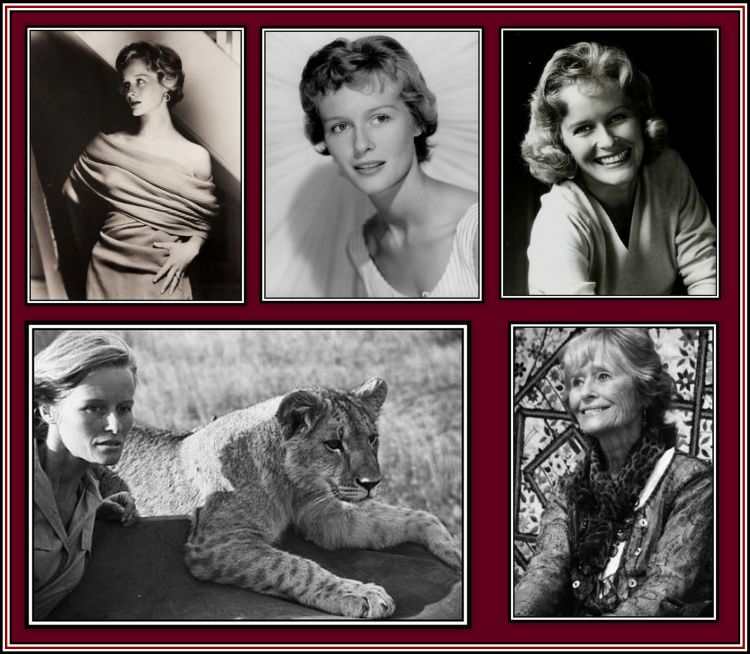 |
Virginia McKenna |
 |
Paul Scofield |
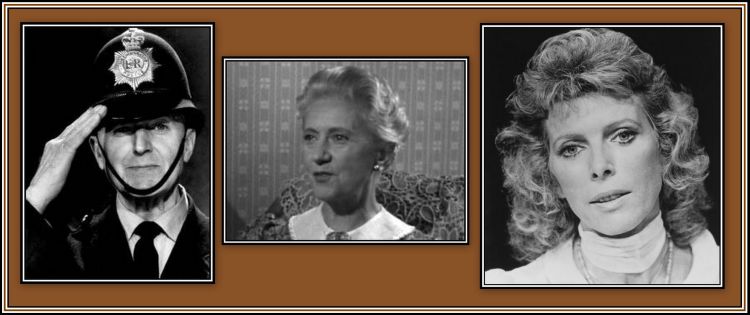 |
Jack Warner, Denise Grey & Billy Whitelaw |
| |
Although my arm was quickly around the girl next to me, I soon forgot about pursuing our relationship further as I became more and more engrossed in the film. I remember being stunned at the end. I was very upset that this young woman had died, and died in such a brutal manner. I recall the cinema house lights coming up and suddenly becoming aware of the audience and those about me. Despite the programme having come to an end, few people had actually got out of their seats to leave. Although there was little noise in the cinema from people discussing the film, there were sounds of both stifled and open crying about me. Although most people were silent, many were in tears and the girls that we were with were crying openly. I remember being happy to comfort my young lady, as it saved me from crying myself. Eventually we left the theatre and I was glad to go with the girls to their bus stop as I wanted to be alone to think about the film. |
| |
 |
| More Stills from the film; click on the collage to watch the film |
| |
The brave young woman who gave up her life rather than give in to the Nazis had a profound effect on me and I did not forget this film. Throughout my life, whenever conversation turned to film and discussion of those films that we have enjoyed most, I would mention Carve Her Name With Pride. Whenever I found someone who had seen the film, I was happily surprised to learn that they had been almost as moved by it as me. |
---ooOoo--- |
Over the years, we get on with our lives. We grow up, leave school, go to work, get married, have children and eventually retire. In 1980, I moved to the United States as a result of my work and for the next ten years, I found myself planning to live there for one more year before returning to Europe. Life is full of unknown twists and turns and mine led me to remain here and finally retire to North Carolina several years ago. |
| |
Once I retired, I was able to pursue interests that previously I had not time for. One such interest was writing. Now, I do not kid myself into thinking that I have great literary talent and knew that my oeuvres would have only a limited appeal. This led me to self-publish a series of stories and to hand out copies to those that I thought might enjoy reading them. Although it was nice to see one’s work in print, I began to regret that I had not produced something with a wider appeal. |
| |
In the hope of attracting a wide range of readers, I decided to put my stories on a website. Here, people could read my material for free and be able to comment on them should they choose. However, in order to attract readers, I needed a theme that would appeal to them. People are always giving advice to potential writers and most suggest that they write about what they know. I was born in the East End, in Bethnal Green and I know the East End, perhaps not as much of the East End of today, but certainly of the recent past. This led me to launch the website that the reader is currently visiting. Originally the site was to present tales of my childhood in the East End. However, recently I realised that if I wished to write stories involving my father, I had to expand my area of interest beyond the East End. |
|
My father was born in Dulwich in South London and was brought up there and in Camberwell and Lambeth. He liked to talk about South London and liked visiting it. When my mother accompanied him on a visit, he told us how places like the Elephant & Castle, Brixton and Lambeth had been when he was a child. My father was very proud of The Lambeth Walk, a dance that once swept the world, and liked to perform it with my mother in their kitchen. When I was young, I was amused greatly by their performance and would join in and always yell out, at the appropriate time, a lusty ‘oy! |
| |
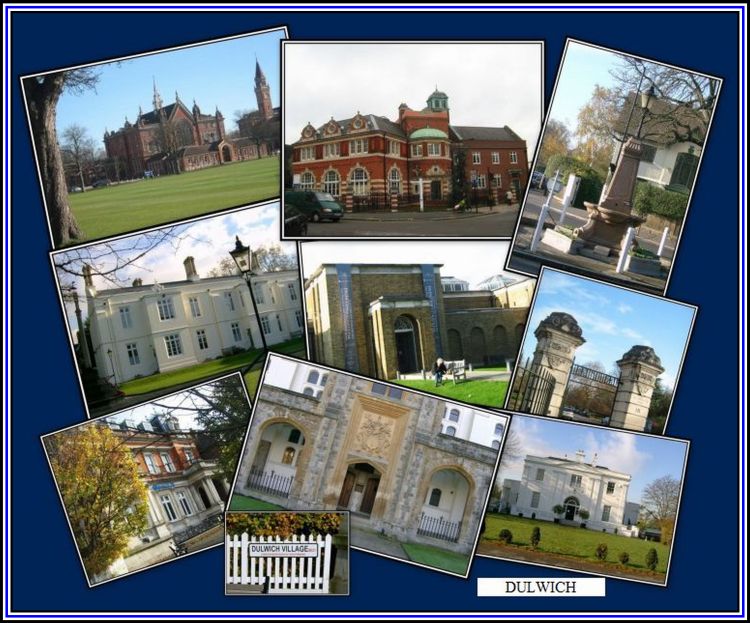 |
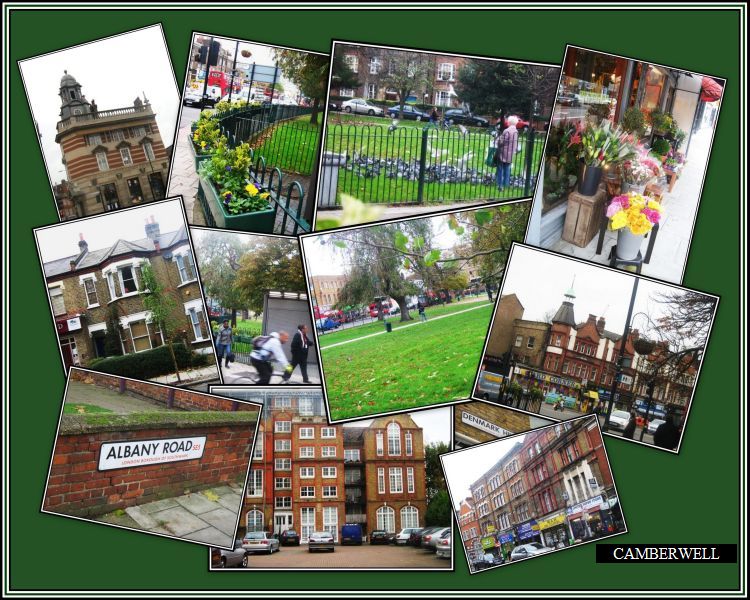 |
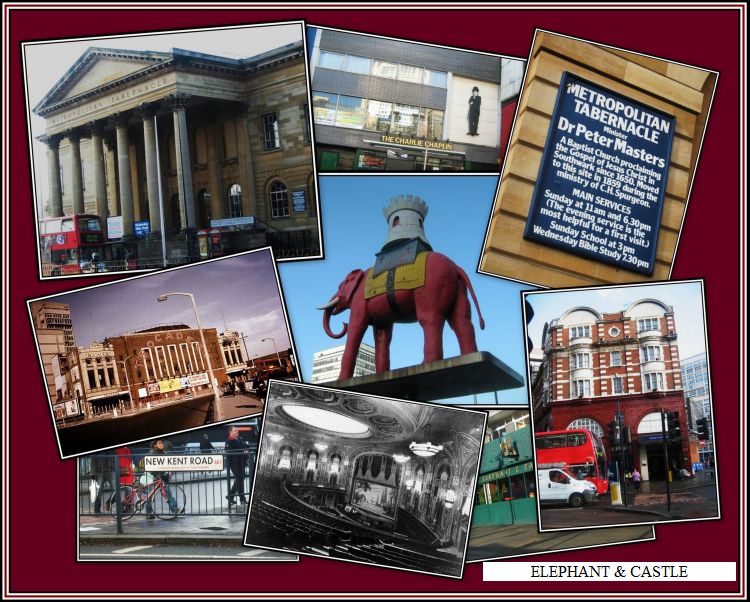 |
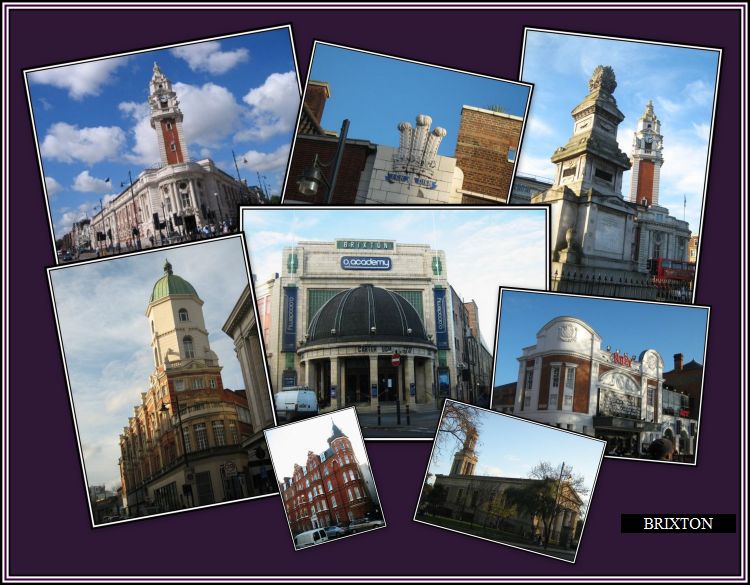 |
 |
| |
In 2008, I was visiting London. On such trips, I rarely, if ever, cross the river to South London. However, during this visit I learned that Battersea Park had undergone some refurbishment and decided that it might be of some interest to visit it. Like most places in South London, the park was not well known to me. The only time that I had visited it was during the Festival of Britain and that was in 1951. |
| |
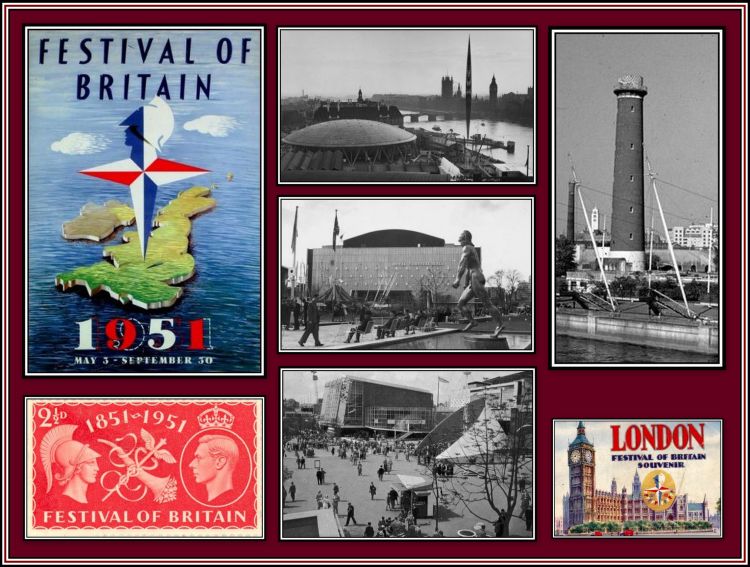 |
| |
Battersea Park had been transformed into the Pleasure Gardens as part of the Festival celebration. The gardens included a Guinness Clock, which at various times of the hour offered numerous displays and treats for the audience. In addition there was a Tree Walk, a miniature railway and a Fun Fair. I was not in the habit of going to fun fairs as a child. My parents disliked them. My mother was convinced that such places were alive with crooks and pickpockets. I remember being taken there on a Thursday evening sometime in 1951. It was pouring with rain and we got soaked. Happily we saw the Guinness Clock in action, but were unable to enjoy either the Tree Walk or the miniature railway. I remember that, on the whole, it was a miserable evening and we never did return to see what we had missed. |
| |
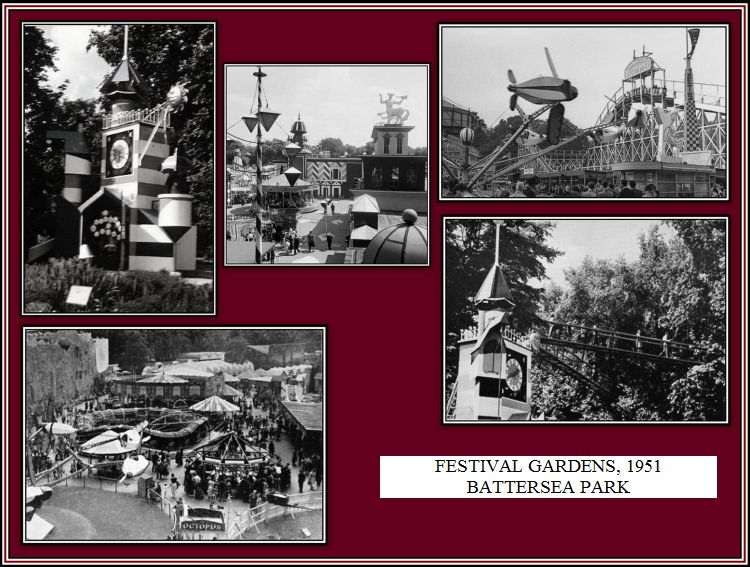 |
| |
In 1956, the Hollywood producer, Mike Todd, who was a great showman, together with his wife, Elizabeth Taylor, threw a post-premiere party to celebrate the opening of his film, Around the World in Eighty Days, at the park. This was said to be a spectacular affair with no expense spared. The newspapers were full of the event the next day and the reports not only mentioned those in attendance, but also how many of London’s buses had been hired to transport the guests to and from the park. |
| |
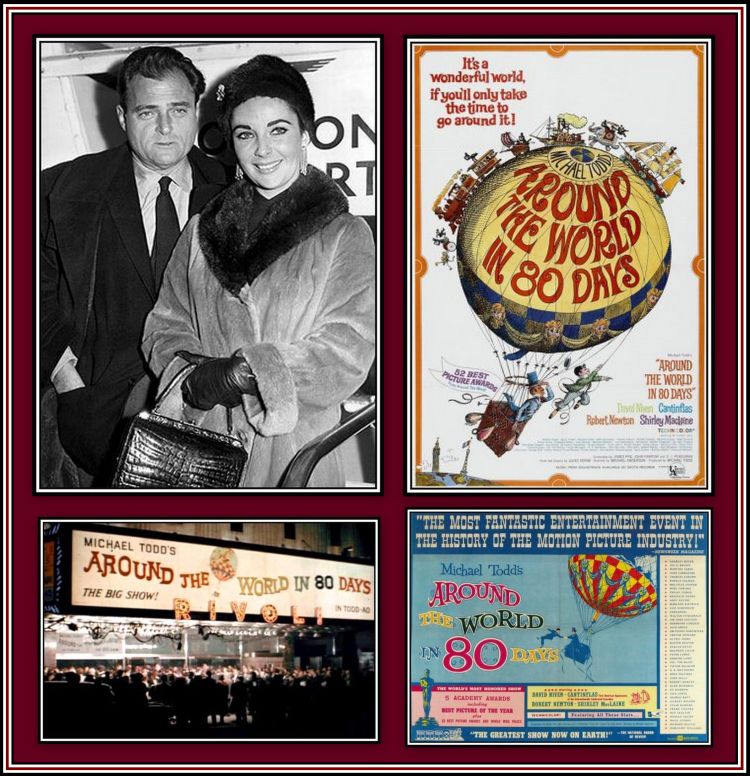 |
| |
Once the Festival of Britain ended, the Battersea Park Fun Fair stayed open. It was famous for its roller coaster, named The Big Dipper. This ride caught fire in 1970, but in 1972, one of the trains rolled back to the entrance station causing death and injury to a number of children, which led to the ride being taken out of service. With this attraction gone, the number of visitors to the fun fair dwindled and it was closed permanently in 1974. |
| |
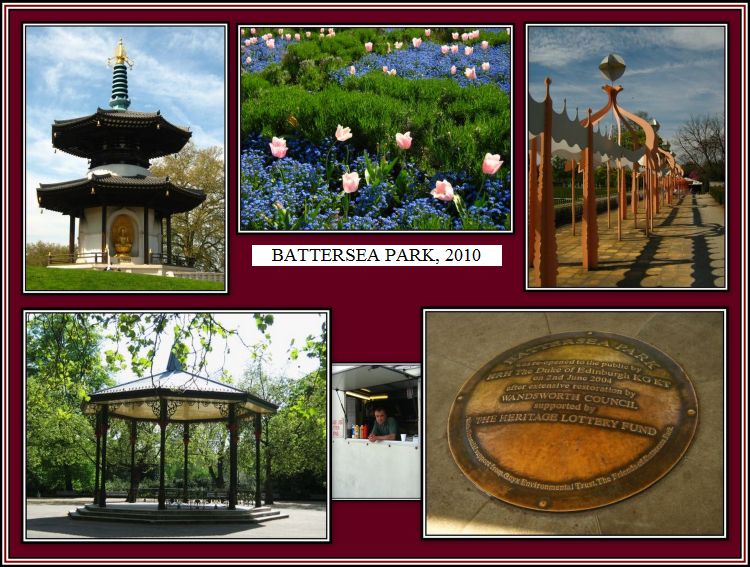 |
| |
The park continued to be visited by local residents and visitors and in 1985 the London Peace Pagoda was erected. Between 2002 and 2004, the park underwent a refurbishment thanks to a Heritage Lottery Fund and June 2004, the park was reopened by Prince Phillip.
|
| |
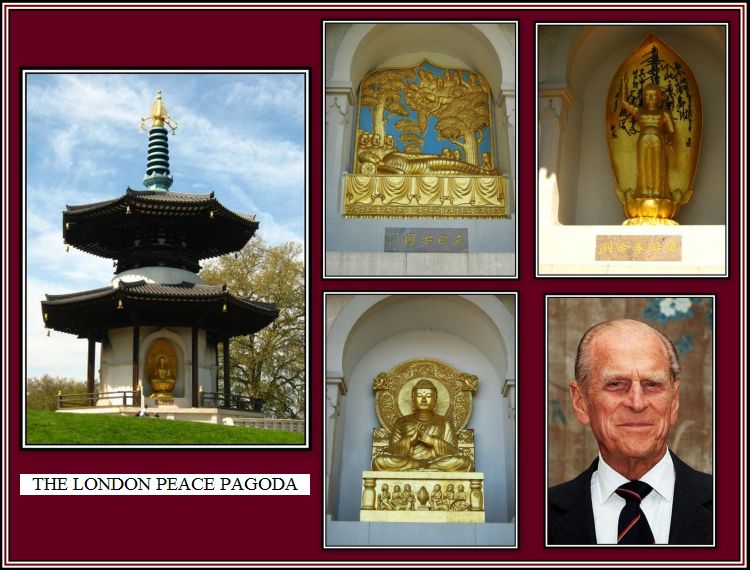 |
| |
I made my way past the many visitors to London who were busy having their pictures taken with the London Eye and started to walk across Westminster Bridge. As I did, I turned to look back at the Houses of Parliament and Big Ben and also recalled the final scenes of the film, Genevieve, when the hand brake slipped and the old crock slowly crept over the bridge thereby winning the bet for her owner. |
 |
Click on the poster to see the final scene from the film
Top row: the Houses of Parliament & Westminster Bridge
Click on the picture of Westminster Bridge to hear the theme music from the film
Middle row: Diana Sheridan
Bottom row, left to right: John Gregson, Kay Kendall & Kenneth More
Click on the picture of Kay Kendall to see her playing the trumpet |
| |
I made my way down the steps at the south end of the bridge and began my walk along the Albert Embankment towards Battersea. I walked past St. Thomas’ Hospital and noticed a sign pointing the way to the Florence Nightingale Museum, which obviously existed in the hospital. |
| |
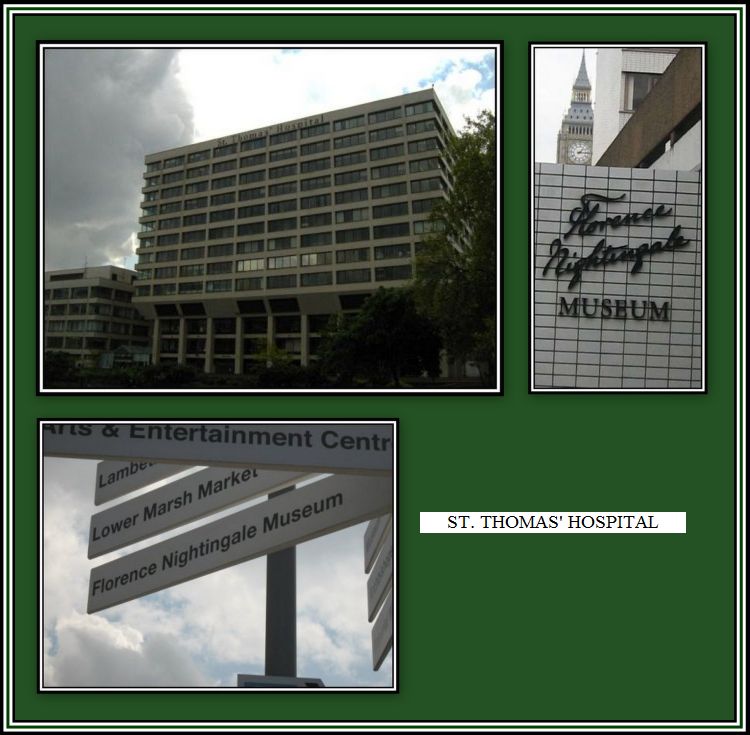 |
| |
I continued on my way and soon arrived at Lambeth Palace. The Palace is at the foot of Lambeth Bridge and is the official London residence of the Archbishop of Canterbury and houses the Lambeth Palace Library. The Library is the principal holder of the records of the Church of England and was founded by Archbishop Richard Bancroft in 1610 and contains over 120,000 books on numerous subjects including Commonwealth history, art and architecture and aspects of English social, political and economic history. The collection contains an incomplete copy of the Gutenberg Bible consisting of the New Testament printed on vellum, and the Lambeth Bible, a 12th Century illuminated Bible of the Romanesque period, printed on vellum, and consisting of the Books of the Bible from Genesis to Job. Adjacent to the Palace is the parish church, St. Mary-at-Lambeth. Although rebuilt in 1850, it has retained a medieval appearance and houses the tombs of Archbishop Richard Bancroft and Vice Admiral William Bligh F.R.S., R.N., who was commander of the HMAV Bounty during 1789 at the time of the mutiny and who once lived at 100 Lambeth Road. |
| |
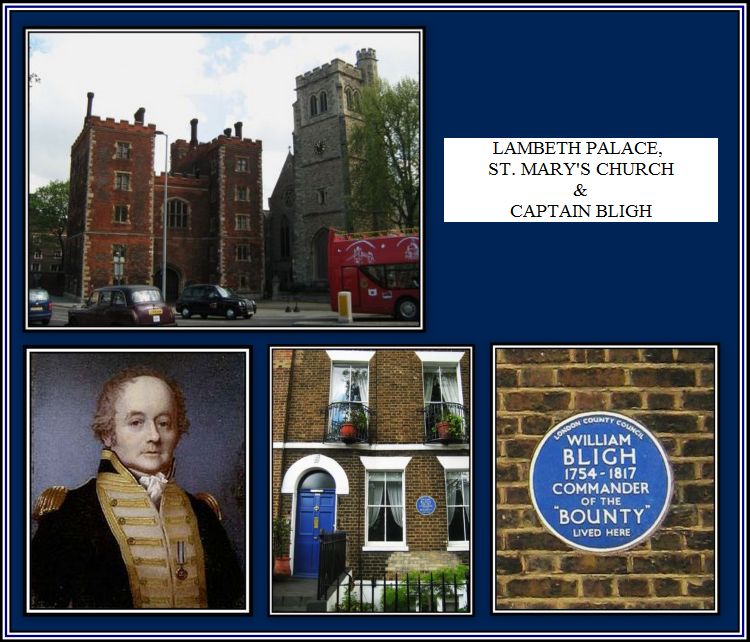 |
| |
Just before arriving at Lambeth Palace, I noticed a series of monuments on the grass verge of the Albert Embankment. Upon closer inspection, I found that one memorial was to The Heroes of Telemark. I had heard of The Heroes of Telemark and knew that they destroyed the factory where heavy water was produced in Norway for use by the Nazis. I remember reading a book about them and also seeing the film made in 1965. |
| |
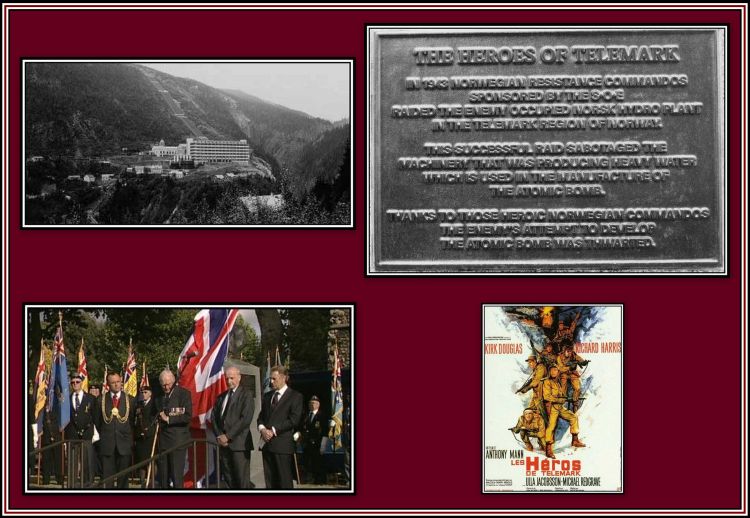 |
Top left: the Vemork power plant at Rjukan, Norway where Heavy Water was concentrated
Top right: plaque to commenorate those that sabataged the plant
Bottom left: Memorials unveiled on 4th October, 2009
Click on the power plant and the Memorials' unveiling to learn more |
| |
When I moved on to the second monument, I am afraid to admit that I did not recognise the name of Violette Szabo immediately, but it did cause me to search my memory. Once I began to read the inscription on the memorial, the poem literally leapt out at me and then I suddenly remembered who Violette Szabo was! |
| |
The Life That I Have by Leo Marks
The life that I have
Is all that I have
And the life that I have
Is yours
The love that I have
Of the life that I have
Is yours and yours and yours
A sleep I shall have
A rest I shall have
Yet death will be but a pause
For the peace of my years
In the long green grass
Will be yours and yours and yours |
| |
This memorial was to the brave young woman that I had admired for most of my life. I read the poem several times and was openly moved by the words. The poem had been used during her missions into France as a code and had been written by Leo Marks, a fellow member of the Special Operations Executive (S.O.E.). |
| |
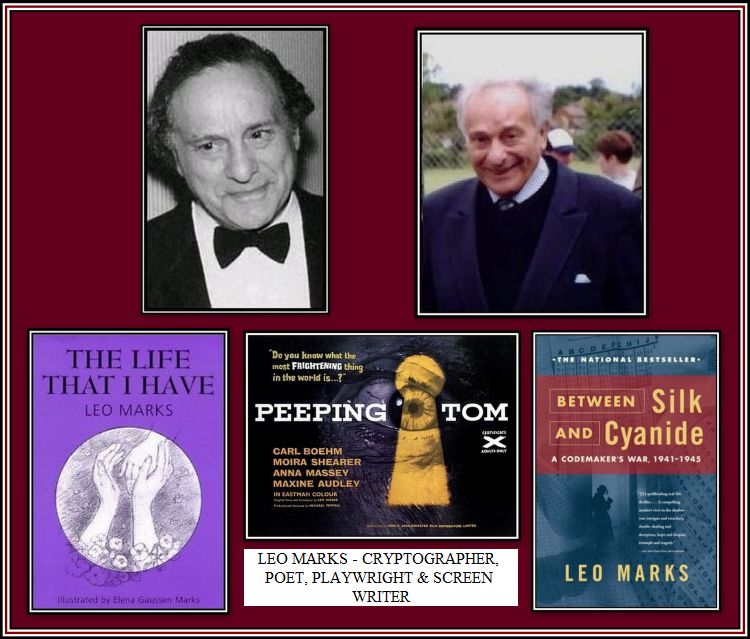 |
| |
The bronze bust of Violette Szabo that sits on the memorial was executed by Karen Newman and was unveiled in 2008. |
| |
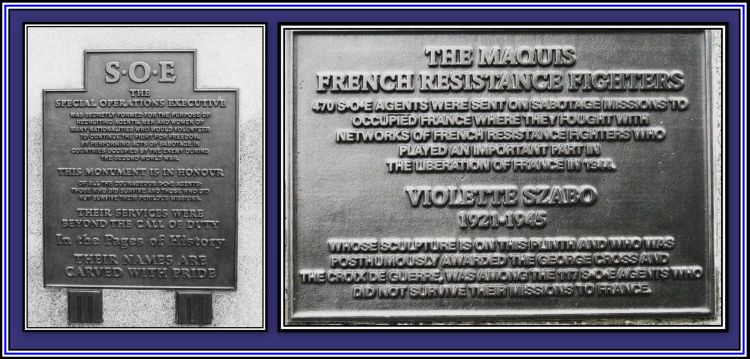 |
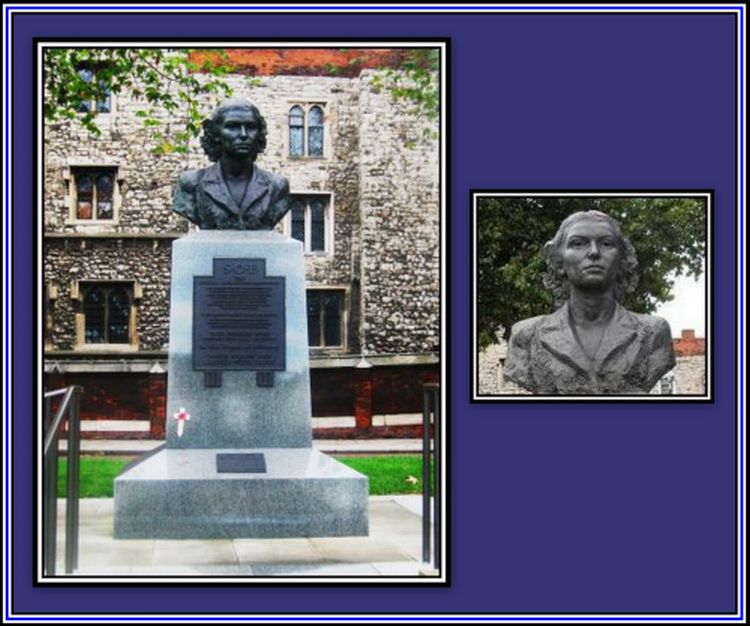 |
| |
I stood there and thought of what I knew of the young woman who had given up her life after receiving the most heinous of treatment and who had been awarded posthumously both the George Cross and the Croix de Guerre by grateful people. All I knew was what I had learned from the film and I was determined to find out more of this woman. |
---ooOoo--- |
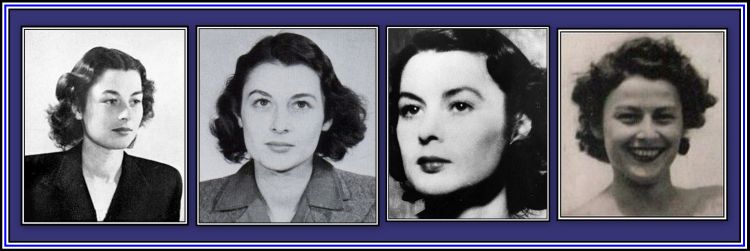 |
| |
Violette Bushell was born on 26th June, 1921 in Paris. Her mother was French and her father English and had met during World War I. They eventually moved to London and settled in Brixton where she went to school. When World War II broke out, she was working in the department store, Bon Marche, which according to my father was a wonderful store that only carried quality goods. Sadly, the store, which opened in 1877, closed down recently and remains empty. |
| |
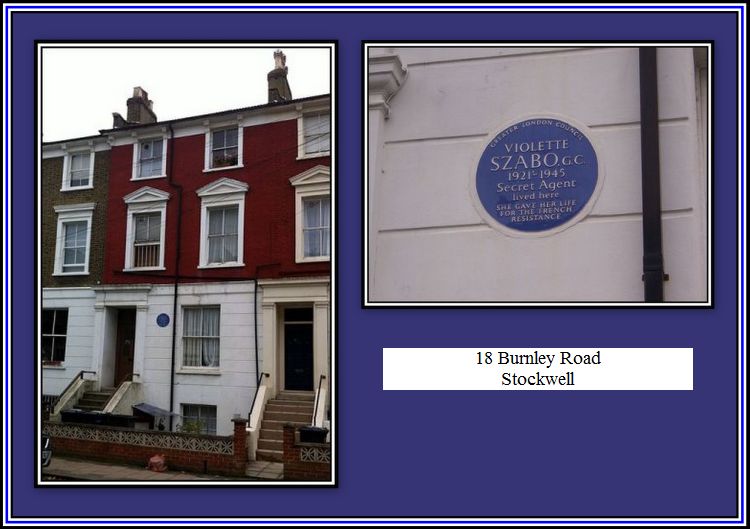 |
 |
| |
During the Bastille Day Parade of 1940 in London, she met Etienne Szabo, a French officer. They were married on 21st August, 1940 after a brief courtship. Her husband died in October 1942 during the Battle of El Alamein not long after the birth of their daughter, Tania. Violette had joined the Auxiliary Territorial Service in 1941 and following her husband’s death she offered her services to the Special Operations Executive (S.O.E.). |
| |
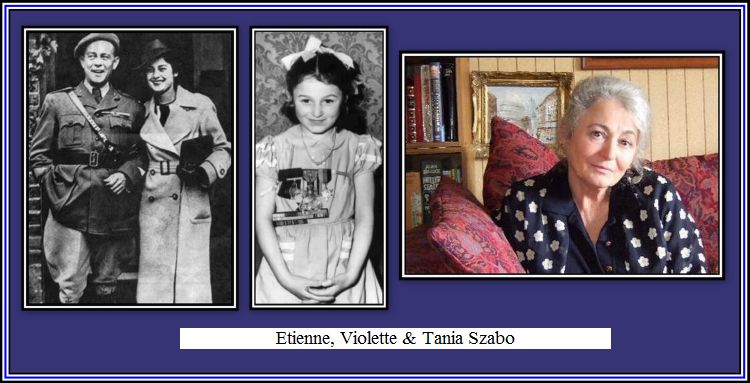 |
| |
After a series of interviews, she joined the S.O.E. and underwent training that would serve her well once she was behind enemy lines. Apparently she was not to be a spy, but rather was to make difficulties for the occupying forces. She was given the code name, Louise, and parachuted into occupied France on 5th April, 1944. Her first mission included helping the re-organisation of the French resistance in the Rouen area, which had been broken up by the Germans. She led the group in destroying a number of bridges and her radio messages helped pin-point targets for Allied bombing raids. She returned to England on 30th April, 1944. |
| |
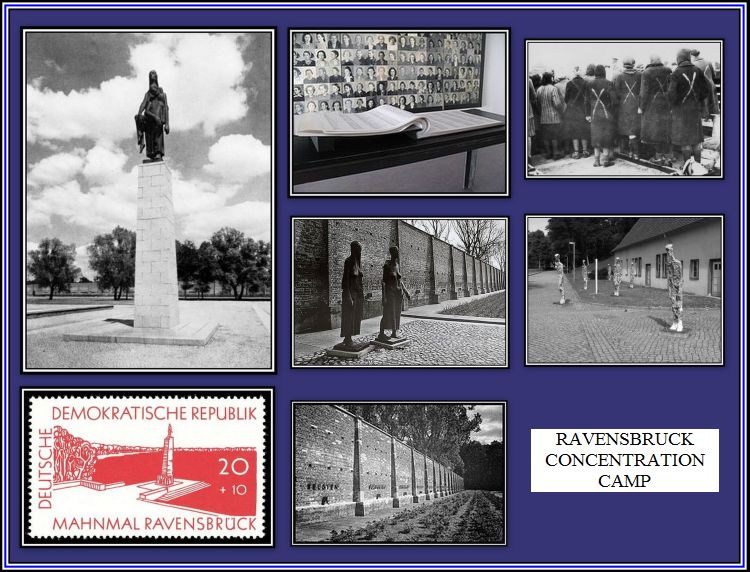 |
| |
Her second mission began on D-Day, 6th June, 1944when she parachuted into France. Soon afterwards she was ambushed along with her guide by an enemy patrol. Although wounded, she insisted that the guide escape, while she was captured and taken to Limoges and then to Paris. Despite brutal treatment, she did not give her captors any information and was eventually transported to Germany where she was housed at Ravensbruck Concentration Camp and two work camps. Following her return to Ravensbruck, she was executed on a day between 25th January, 1945 and 5th February, 1945. She was only 23-years old. |
---ooOoo--- |
Later, I learned that in addition to the memorial close to Lambeth Palace, there was also a blue plaque on the wall of the house in Burnley Road, Stockwell, where Violette Szabo grew up. I also learned of a museum dedicated to her in 2000 at her cousins’ home at Wormelow Tump, Herefordshire, which she visited while growing up and between her missions. In addition, at the Jersey War Tunnels on the Channel Island of Jersey, there is a room dedicated to her deeds. |
| |
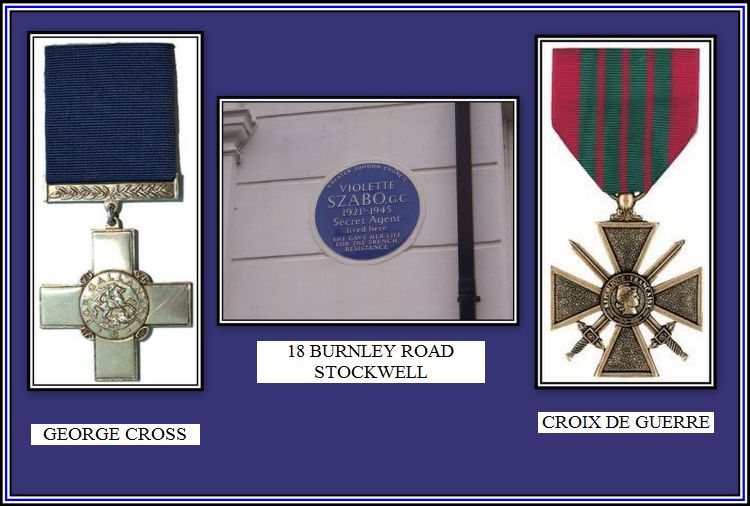 |
| |
In 2011, I discovered that there was also a mural dedicated to her in Stockwell. During my last visit to London in November 2011, I went to see it. I went quite fittingly on the Saturday before Remembrance Sunday. Although it was a dull and cold day, I found myself charmed by the mural. I have to admit that it was nothing like I expected. It was painted on the exterior of the entrance to a deep level shelter in 2001 and produced by Brian Barnes together with the assistance of the children of the Stockwell Park School. The mural commemorates both Violette Szabo and Vincent van Gogh and also the local people who gave their lives during World War II. |
| |
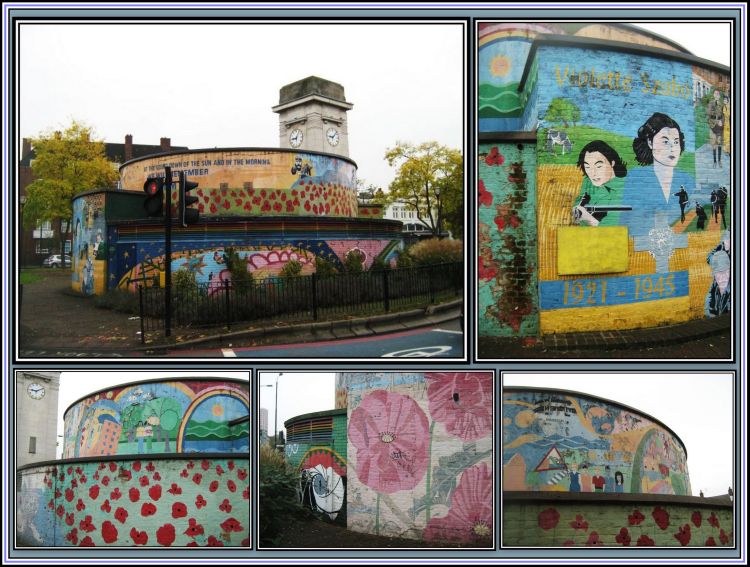 |
| |
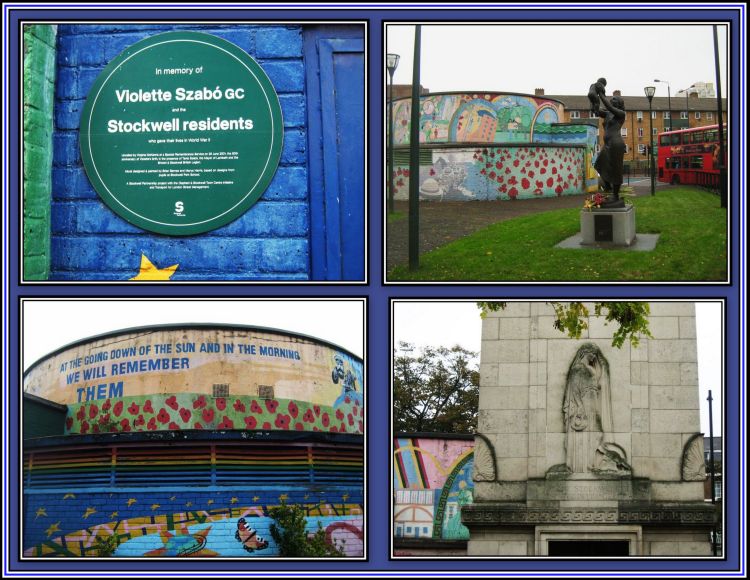 |
The Stockwell Memorial |
| |
I was very happy to learn that Violette Szabo has not been forgotten and that there are permanent reminders of the valour shown by this exceptional woman who gave her life so that we might continue to enjoy a life free of tyranny. |
---ooOoo--- |
For further information on the life and deeds of Violette Szarbo, please see the following:
- Violette and Etienne Szabo’s daughter, Tania, has written the book, Young Brave and Beautiful: The Missions of Special Operations Executive Agent Lieutenant Violette Szabo, where she details the missions undertaken by her mother.
- In addition, Tania Szabo oversees the official website dedicated to her mother at: http://www.violetteszabo.org/
- http://en.wikipedia.org/wiki/Violette_Szabo
|
| |
|
On Remembrance Sunday in 2009, I had the honour to visit the RAF station at Tempsford. It was extremely moving to visit Gibraltar Farm Barn where agents picked up their gear before making their way to their assigned aircraft. My mother, Altie Johnson, was a WAAF here during World War II and was stationed at Tempsford. Her job was to drive the crews out to their aircraft. She told me that she occasionally saw other trucks going out to aircraft and once she saw the canvas back-flap of one of the trucks blow open and saw a number of people standing inside dressed in strange uniforms. I assume that these people were agents going off to make jumps into occupied countries. Both Violette Szabo and Odette started their journeys from Tempsford.
Jean Carlyle-Lyon |